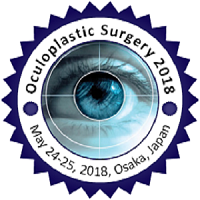
Ayelet Priel
Oculoplastic Physician Chaim Sheba Medical Center Israel
Title: Incision-Less Solution For Punctal Stenosis Induced Epiphora- Is It Really Effective?
Biography
Biography: Ayelet Priel
Abstract
Punctal stenosis is a common cause for epiphora. The reasons for punctal stenosis vary from mechanical stenosis, iatrogenic stenosis (radiation, chemotherapy), involutional or eyelid position causing stenosis etc. Understanding the mechanism cannot always solve the stenosis that has already evolved. Several surgical punctopalsty techniques are known. Some of them involve slunting of the punctal circular muscle using a blade.
Methods- We would like to present our method in details, using the Kelly punch in two directions after dilation by a punctal dilator. OCT was performed before and after punctoplasty, in a specific method to be described. All histologic specimens were retrieved from the Kelly punch – tested also by Masson Trichome stains
Results – Histologic evaluation revealed only 1 out of 22 specimens to involve muscle, therefor not influencing the pumping mechanism which is extremely important for the normal tear flow. OCT sections of the punctum before and after punctoplasty will be presented to show anatomical enlargement of the puncta and ampullae which is statistically significant.
Conclusions- Kelly Punch Punctoplasty is a safe method for widening the punctum without sacrificing the tear pumping mechanism, with excellent results supported by histologic and imaging testing.

